Taking up any new pastime or profession can be tough. Photography is no different. We are lucky enough, these days, to have sophisticated cameras that can take care of pretty much everything technical for us, especially for newcomers.
However, once we are past those early days of unbridled enthusiasm, we begin to realise that to push our photographic knowledge, we are going to need to study.
We may quickly grasp how the controls on our cameras work, the technical aspects of exposure, focus, white balance et al are fixed concepts. Once you have mastered them, they do not vary.
The creative side is much more fluid. A great shot requires not only great technique but also a keen eye for composition. Composition, by its very nature, is subjective. However, in photography, we have a set of compositional guidelines. These techniques are nothing new, they have been handed down through centuries of artists, each generation honing and improving upon them. They are as relevant today to us painters of light as they were to the artists of Renaissance Italy.
There are many of these compositional “rules”. As a photographer you may use some all the time, some never. You will almost certainly use combinations of two or more rules in many of your photos. But how to remember them? How to apply them? It could take years of practice to become proficient at all of them.
Fortunately, there is help in the form of Photzy’s Action Cards and today we are going to take a look at them and how they will help the creative side of your photography.
Secure Your 88% Discount on the Photzy Action Cards Here
What Are Action Cards?
One of the more proven techniques for learning is to use study cards. Each of these single-page cards represents one single subject within the field you are studying like a series of photography assignments. It would contain only the information most pertinent to that field, condensed into bite-sized sections that can be easily remembered. You can carry them anywhere to help you, pulling them out to jog your memory.
Photzy’s Action Cards work on the same principle. They condense all the salient information you need into a printable PDF file.
However, as well as giving you the important information you need to learn, Action Cards additionally set you assignments to challenge your knowledge and to critique what you have learned.
In total there are 65 of these Action Cards split into two distinct sections. These sections are Composition and Genre. There is an additional 20 Action Cards that provide you with Stretch Goals. We will look in detail at the contents of each a little later in this review. (They are not to be confused with Photzy Snap Cards which is a different product.)
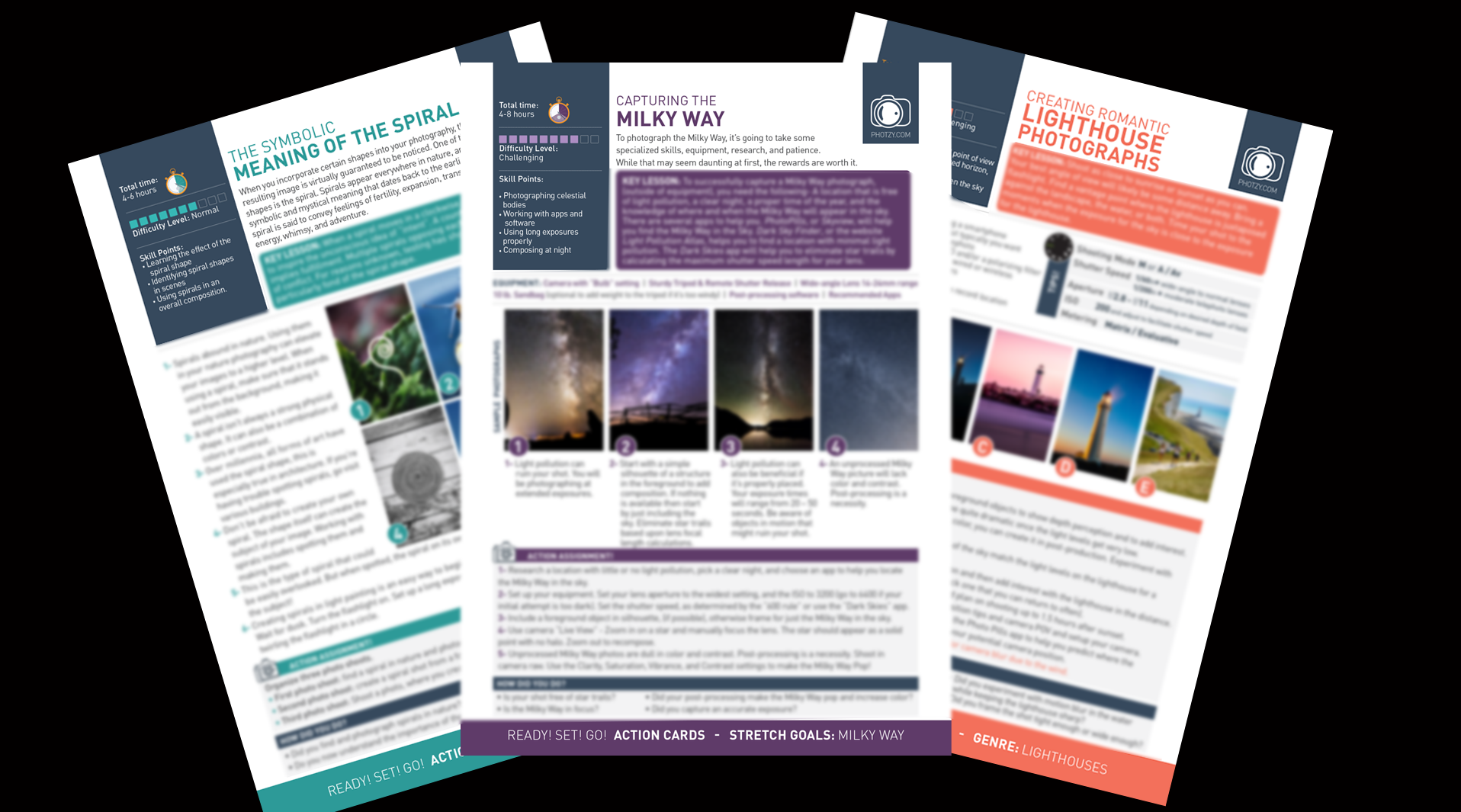
How You Can Use The Action Cards
In a perfect world, you would have all of these Action Cards printed, laminated, and stored in a convenient pocket of your camera bag. However, although these cards are perfectly printable, it would be costly and not exactly environmentally friendly.
A better option for the digital age is to view them digitally. I have downloaded the Action Cards to both my iPhone 8 and my iPad 4 Mini. On my iPhone 8, the text is too small to read if I keep the phone in portrait mode, however by turning it to landscape, the text is much more legible.
The iPad Mini and other small form factor tablets are made for this type of viewing. The PDFs look sharp, and the images are colorful. The other advantage of digital delivery overprinting is that you can pinch to zoom in on specific parts of text or images.
For this review, I downloaded a few of the Action Cards via email and then loaded them into iBooks on my Apple devices. You should be able to do the same with any book app such as Kindle on Android devices.
If you want to download all the PDFs to your device at once, it's probably best to upload them to a cloud storage device such as Google Drive or Dropbox.
Let's take a look at the design of Photzy’s Action Cards.
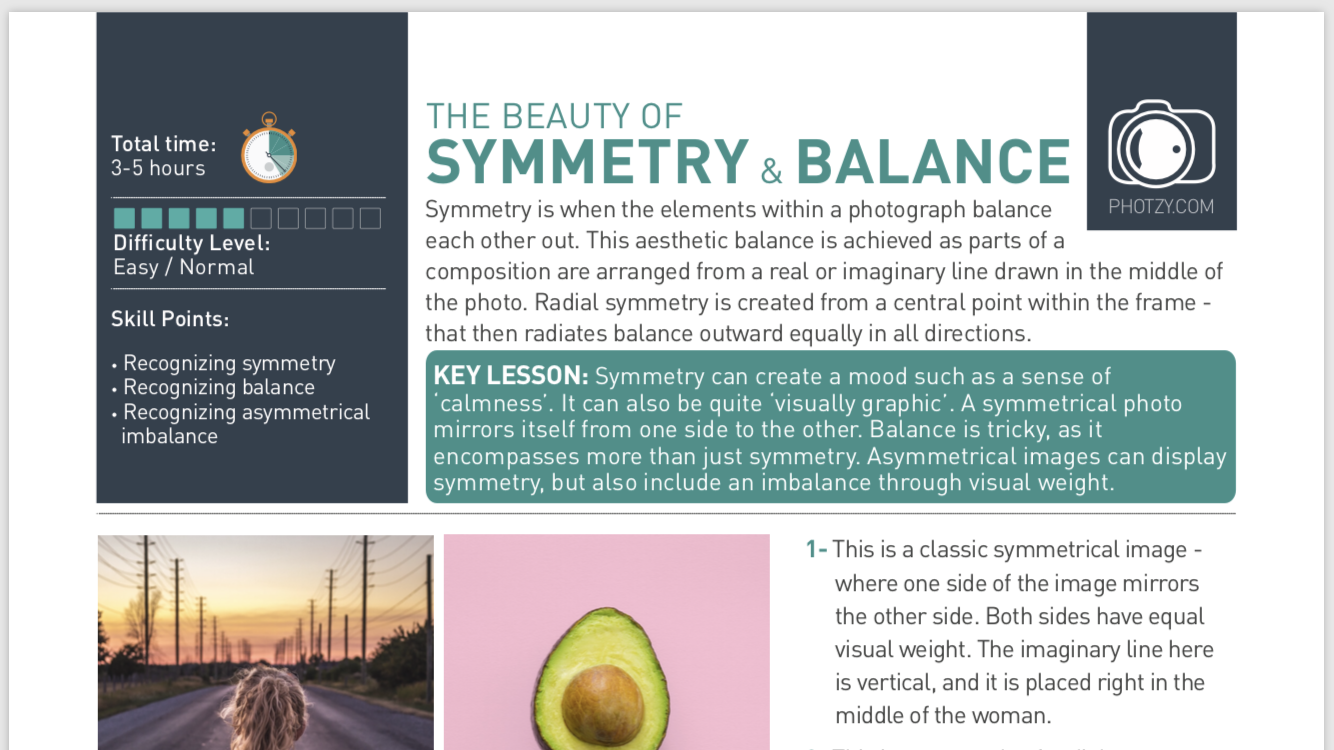
The Layout and Design of the Action Cards
For study or action cards to work, they have to have a clear, and uniform design. You need to know where the relevant information is on each card and to be able to find it quickly. In this respect, Photzy’s action cards are beautifully designed.
For each of the three main sections of the project sheets, the cards are color coded. Composition cards have green headers and text boxes, Genre cards are red and, if you add on the Stretch Goals, they are purple. This instantly allows you to know which type of card you are dealing with. Looking closer, the layout is the same for each card across all sections making it easy to find exactly what you need.
The top left and very prominent is a dark information box. Here is information is about the difficulty of the task and the expected time it will take to complete the studies set out in the action card.
Difficulty levels range from All Levels through to Very Challenging. This is very useful in allowing you to plan out the way you wish to study, working your way up to the most challenging cards.
The Total Time to complete a card varies from 2-8 hours depending on the difficulty of the subject and the tasks set within it. Also within this information box are the key skill points that you will learn from this card.
The top center of each card is the card heading and underneath this is a brief summary of the techniques that the card will cover. Below this is a Key Lesson box that provides interesting and pertinent information on the lesson ahead. These boxes are a great idea and help you understand the concepts of what you are about to learn.
For example in the compositional cards, the Key Lesson box will briefly detail why a compositional rule works.

Beneath the heading area on the Genre cards is a small text box that denotes what equipment you will need to carry out the action card – the same is true for the Stretch cards. It will detail, for example, if you need to use a particular focal length of lens or flashgun. In addition, it also mentions if you will need any post-production software to finish the card. This is highly useful as you may not have the right equipment to complete certain cards.
Beneath this, we come to the main part of the action card. Here you find well-laid-out and illustrated details on the subject you are learning. On some cards, this is in the numbered steps, on others, individual text, and picture paragraphs. As you would expect from a study card it condenses the important knowledge in easy-to-understand parts. By dispensing with any flowery prose and extraneous facts, it allows you to concentrate solely on the stuff you need to know.
As learning is as much a visual process as it is a reading one, all the cards in each section feature photographs and diagrams to illustrate the words they accompany. Depending on the card they might show the correct and incorrect way of getting the shot, lead you through several examples of a compositional rule, or show illustrations on how the eye is led through a picture.
The addition of plentiful illustrations and images not only enhances the design but also helps you understand the key concepts much better.
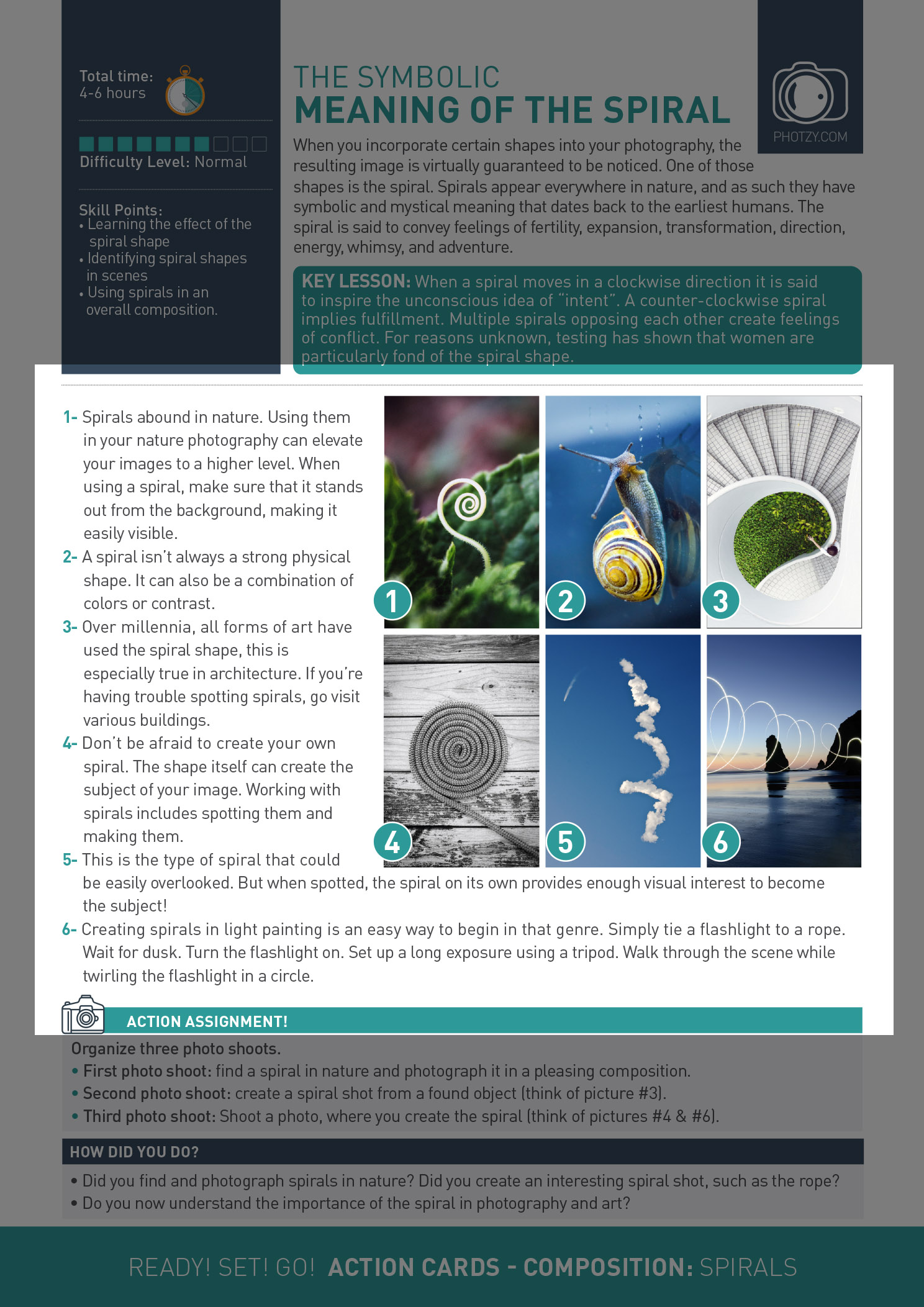
Beneath the main tutorial texts and illustrations, we come to the last section of each action card, the assignment. In this section, you will find a step-by-step plan to capture want you have learned from the Action Card. Depending on the task, this might involve actual shooting or it may be post-production, or perhaps a little of both. The final part of the Action Assignment is How Did You Do?
This asks you basic questions relating to the Action Card you have just studied. By its very nature, you have to be self-critical and honest with your own assessment, this is always one of the more difficult aspects of self-study.
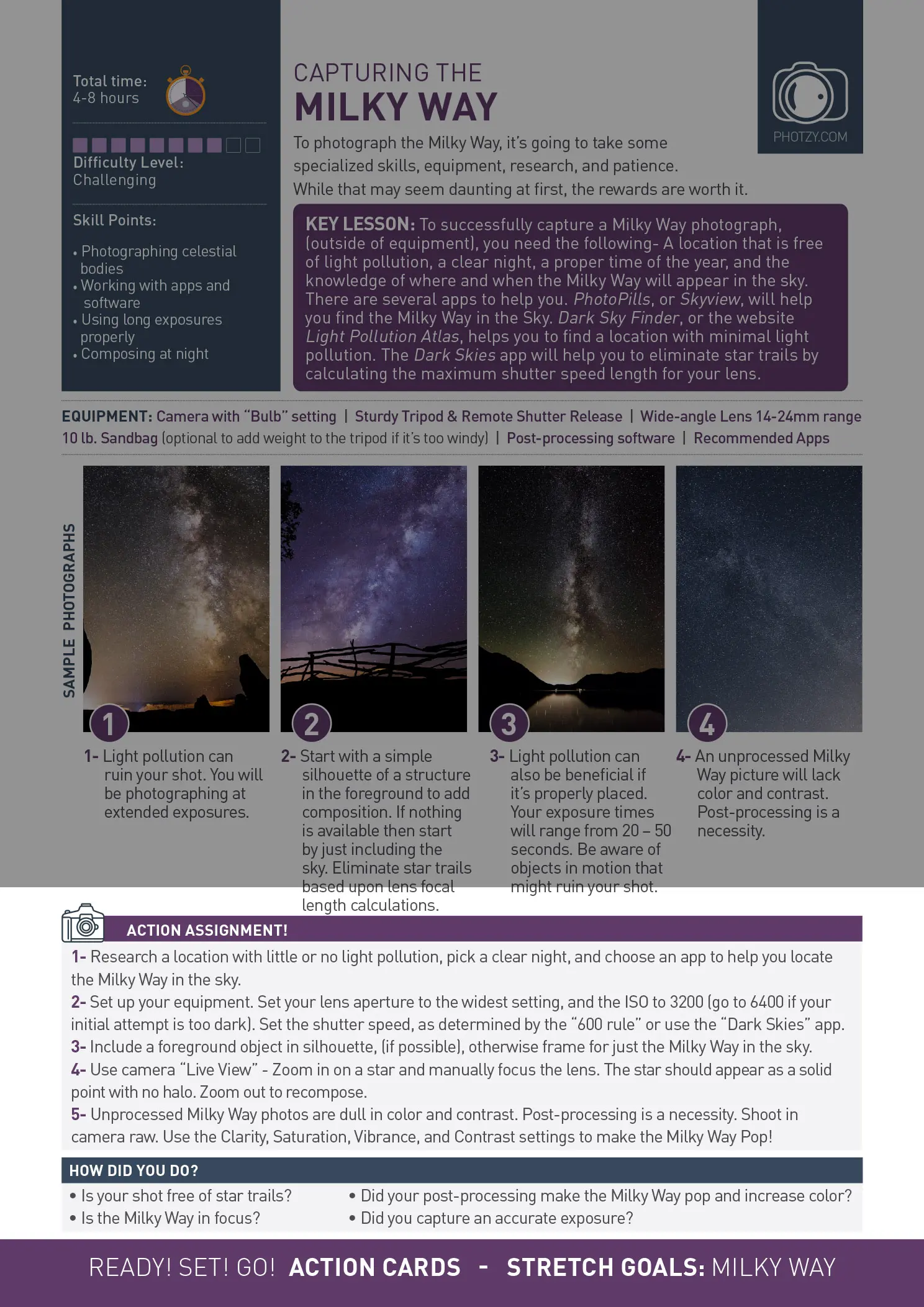
The Different Types Of Action Cards And What They Contain
As mentioned at the top, the Action Cards are split into two sections or photography assignments. Composition and Genre.
Composition Action Cards
Composition is the largest of these sections containing 34 Action Cards. These like the other sections are arranged alphabetically but it would have been nice if they could also have been arranged by difficulty. This could be have been done by suffixing the file name with a difficulty rating. This I feel would be highly advantageous to newcomers negating the need for them to look through every card to see if they are capable of the task.
In the Composition section, we have basic topics such as Thirds and Leading Lines through the mid-level rules such as Juxtaposition to more advanced subjects such as Negative Space. There is a huge range of different compositional rules covered making it useful not only for newcomers but more advanced photographers too.
Genre Action Cards
The second section is Genres. Many of us tend to stick to what we know, portraits, travel, and sports and not venture too far into other genres. If we do, it can sometimes be quite stressful as the techniques that we have learned in our chosen genre may well be very different to another. Think of a sports photographer, used to long lenses and high shutter speeds trying out landscape photography or night photography with their wide angles and very slow shutter speeds. This is where this section of Action Cards can be extremely valuable.
For each genre, the cards will suggest recommended equipment and detail the most appropriate settings that you need to shoot that genre. The main section of the genre cards is much more image-oriented than the other two. This is helpful it getting a visual reference on how that genre should look. In addition, the Action Assignment section is also much more detailed, giving step-by-step stages for creating an image in that genre. Overall the Genre section will probably be the most useful for experienced photographers as well as newcomers.
Additional 20 Stretch Goals Action Cards
If you are interested in more advanced techniques, you can add an additional 20 cards to the Action Cards set – Stretch Goals. These cards are designed to focus your mind on the more abstract and subjective elements within photography. They are not about composition but about the many different aesthetic elements that come together to make a picture great. These can be in camera techniques such as creating a mood or post-production techniques like compositing. There are also some more technically-oriented cards such as learning to understand histograms and embracing or correcting lens flare.
Each of the Stretch Goal cards has a number of photos in the main section illustrating the concept of that card. It is followed by bullet points illustrating the key elements you need to learn to achieve the goal. Like with Genres, the Action Assignments are slightly more detailed than their compositional equivalents, mainly due to the increased number of steps required to achieve the technique.
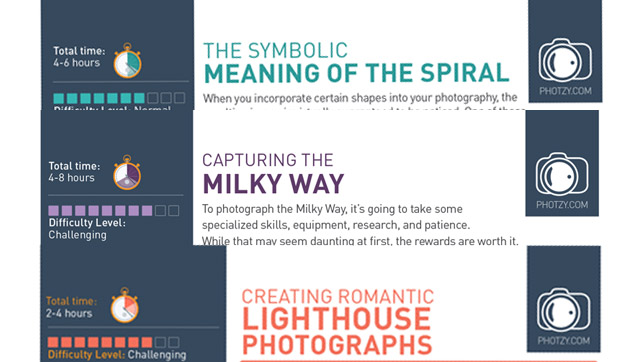
My Final Thoughts On the Photzy Action Cards
Photography is an incredibly complex and ever-changing art form. For newcomers to it, it might seem that the amount you need to learn is overwhelming. Of course, the very best way to learn photography is through taking photos on a regular basis. However, when we do that we may become proficient in one or two of our favorite genres and compositions but never advance beyond them.
Photzy’s Action Cards are an ideal way to push your photographic boundaries beyond the limits of your current knowledge through photography assignments. Beginners will find them invaluable to carry out on shoots and to practice the set assignments, more advanced photographers will find the complex cards useful, especially if they add the Stretch Goals to the set – of course, this is an additional cost, but worth it if you are wanting more advanced learning. Even dinosaurs from the days of film such as myself can easily find something new to challenge themselves with amongst these Action Cards.
If I were to have a criticism it would be that to my mind, the cards would work even better if they were also categorized by complexity and time to complete. That would allow photographers to easily choose a card to work on within their time and ability constraints. That, however, is a relatively minor criticism of what is clearly a well-designed and thought-out product.
Of course, if you don't like them, Photzy always offers a money-back guarantee.
If you want to push your photographic abilities toward a new genre or technique, I would highly recommend the Photzy Action Cards – take a look for yourself here:
Secure Your 88% Limited Time Discount on the Photzy Action Cards Here




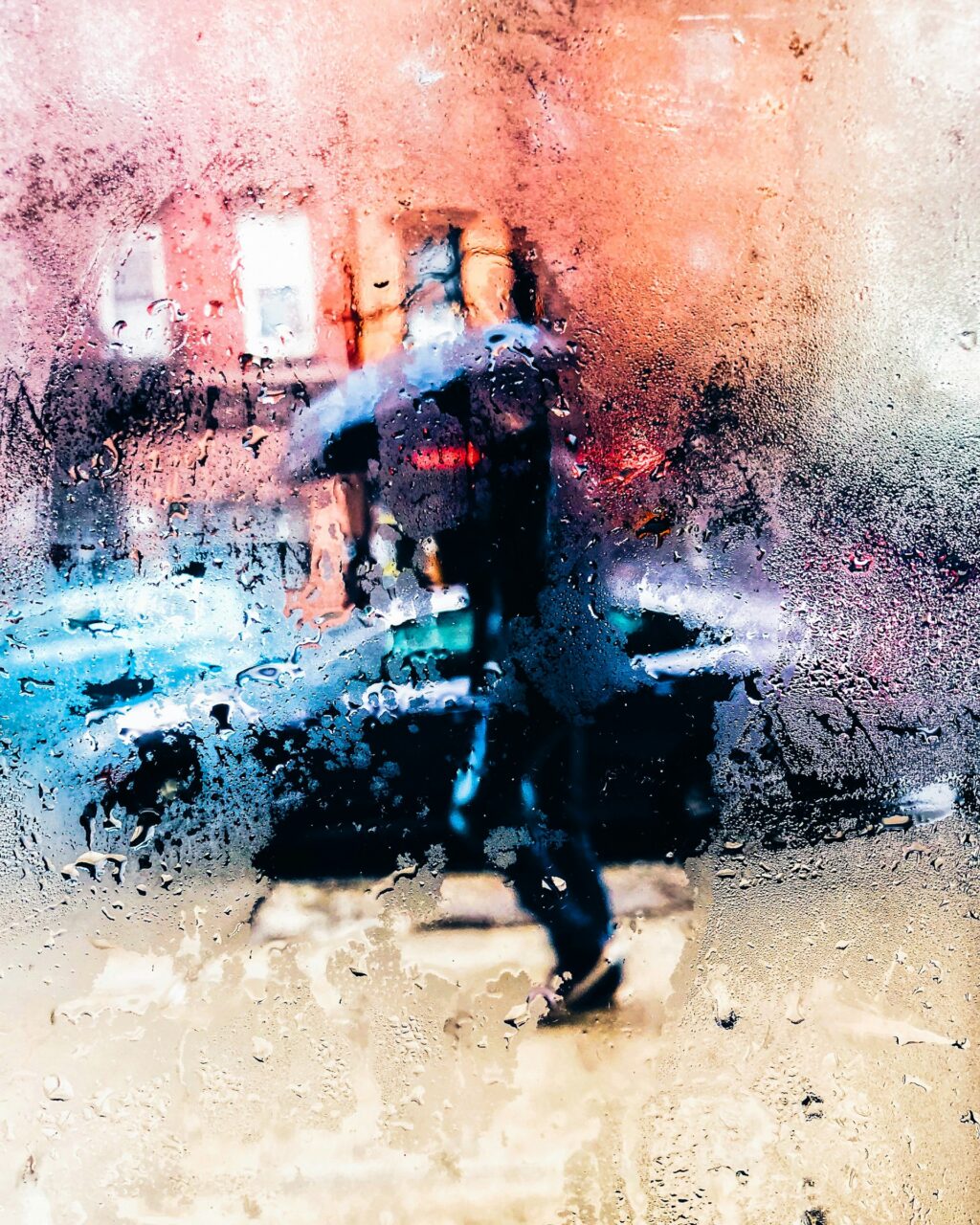
3 Comments
Thank you for that thorough review, Jason!
Is there any other way to get this product? I’m from Bangladesh and I don’t have any debit card.
Great Review. Thanx. I have these cards and they are tremendous